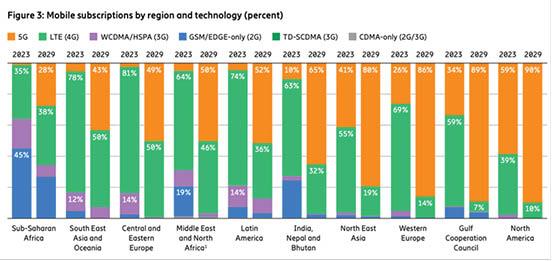03 September 2024

Sub-Saharan Africa is expected to have 320 million subscriptions to 5G mobile telephone networks in 2029, compared to only 11 million in 2023, according to Ericsson’s latest Mobility Report.
The report notes that the expected strong growth of 5G in the region will be driven mainly by the release of spectrum in the low and mid bands as well as the falling prices of devices compatible with this new generation of mobile technology. By the end of 2029, 5G subscriptions are expected to represent around 28% of all mobile network subscriptions compared to 38% for 4G and 8% for 3G. The share of 2G mobile networks accounted for 45% of total subscriptions in sub-Saharan Africa last year. However, it is expected to decline rapidly in the coming years as mobile operators migrate their subscribers to 4G and 5G networks, to reach less than 27% by 2029.
The total number of mobile phone subscriptions in sub-Saharan Africa is expected to increase from 950 million in 2023 to 1.170 billion in 2029, representing the highest average annual growth rate in the world (4% per year). The region will also see the fastest growth in smartphone adoption globally. Around 790 million people in sub-Saharan Africa are expected to use smartphones in 2029, up from 460 million in 2023, representing a compound annual growth rate of 9%.
The report also highlights that the acceleration of the migration of subscribers from 2G and 3G mobile networks to newer networks will boost mobile data traffic in the region. Data traffic on all active mobile networks will increase from 2 exabytes on average per month in 2023 to 13 exabytes per month in 2029, representing a compound annual growth rate of 38%.
Monthly mobile data traffic per active smartphone south of the Sahara is expected to reach 20GB on average in 2029 compared to 5GB during the past year, representing an average annual growth rate of 26%. The expected growth in data traffic in the region will be driven by the availability of more connections, greater coverage by mobile broadband networks, the accessibility of smartphones and the growing popularity of data-intensive content such as gaming and video streaming.







